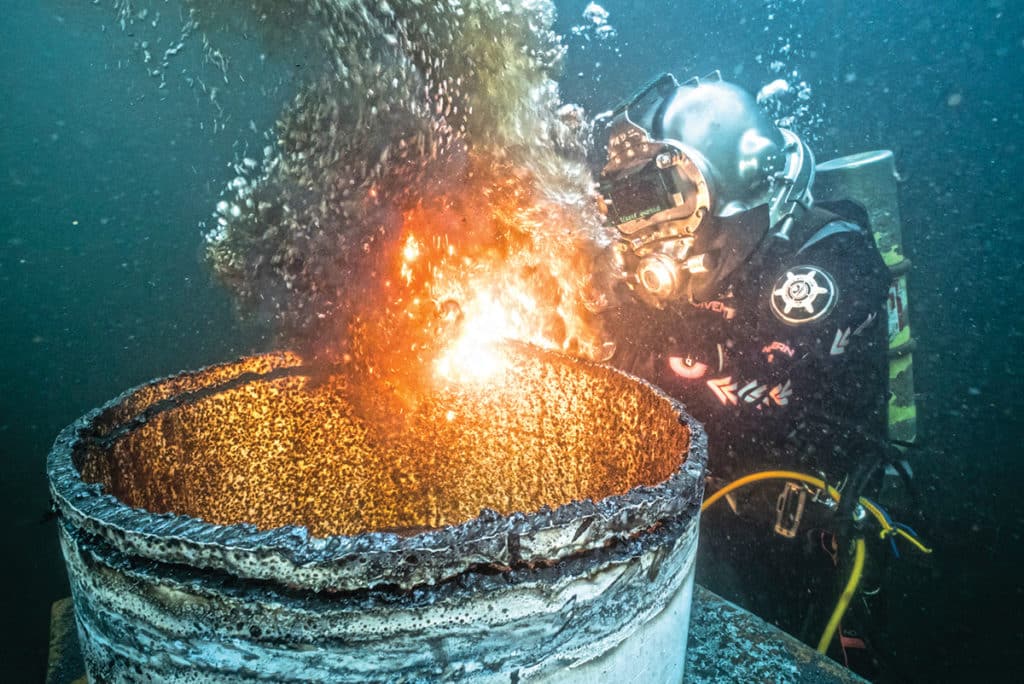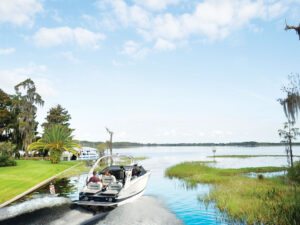
How did you get into underwater welding?
I went to dive school in ’93 because I was a welder, and I was going to relocate to Hawaii, so I figured I’d add that to my portfolio of skills.
What makes underwater welding one of the top five most dangerous jobs in the U.S.?
Danger comes in all different forms: cold water, murky water, etc. There is a different danger on every dive. Overall, the most hazardous is a penetration dive, where you go down and into a sunken boat or barge.
Describe your typical student.
Most of them have never welded before in their lives. Halfway through their dive training is when they come to me. I teach them how to weld topside and then underwater welding. I would say 90 percent of the students I teach have never welded before, maybe once in high school. It works out real well — they don’t have any habits to break. When I get topside-experienced welders, they think they can jump in the water and have at it.
What exactly is underwater welding?
Underwater welding is shielded metal-arc welding. You have the electrode holder in hand. The electrode gets consumed into the joint itself.
You’re using electricity under water?
The potential to get shocked is very high, but there are different mechanisms employed to alleviate that. To complete the circuit, you have to have a clamp attached to the material. It’s always in front of the diver. The diver has to wear a suit, wet or dry, and some sort of rubber gloves. I wear dish-washing gloves. They can’t have any holes or tears in them because the electricity will flow in and give you a good shock.
What’s keeping you from getting electrocuted?
You will feel a little bit of electricity, but it’s more of an annoyance or irritation. The only way you get shocked is if you get in between the circuit. Fish or divers have to understand that you can’t travel between that.
What happens to the fish?
They can get shocked. They’ll get a little hit and dart right out of there. You get a sense that they’ve felt something.
What about cutting with a torch?
One of the more hazardous situations is using a cutting torch. A side effect of that process is the generation of hydrogen gas. It’s highly explosive. A small amount will explode, and it will be violent. Any bubble more than 2 inches in diameter, you’re looking at a good explosion, enough to get your attention.
How much attention?
We get reports of safety issues. I read about a diver cutting into a buoy, and as soon as he pierced through it, it blew up and took him out.
How do you keep it from blowing up?
In any sort of confined space, drill ventilation holes to allow those gases to escape. Say, inside a chamber of a barge, overhead you’re going to drill a bazillion holes.
How long do you stay under?
I’m what you call an inland diver. For me, a 40-foot dive would be deep. For the guys offshore, they start to get into a saturation situation. They will stay under pressure until the job is done, living in a pressurized environment. They could be there three days or three weeks.
Are they the elite of the underwater welders?
If you had to segregate them by class, some people would believe that saturation divers are the elite. Underwater welders are the elite, the saturation divers are the “glory” guys.









